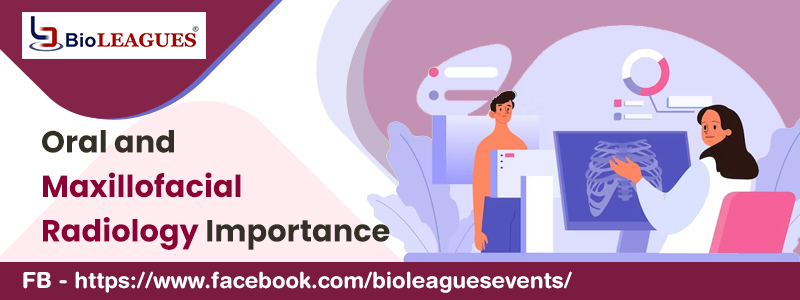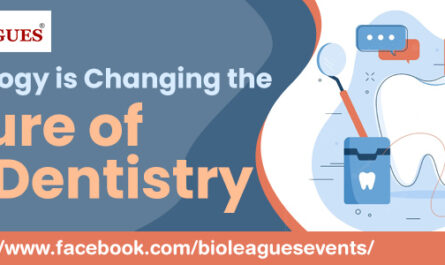Oral and Maxillofacial Radiology is centered entirely on the production and comprehension of diagnostic imaging utilized to investigate craniofacial and dental structures. In simpler terms, it’s the specialty of taking x-rays, CT scans, or MRIs and then checking out those pictures to ascertain a valid diagnosis and an overall plan of care for a person’s oral health.
Oral and Maxillofacial Radiology is officially recognized by the American Dental Association as a dental specialization (one among the nine dental specialties), and it takes a lot of work to become an oral and maxillofacial radiologist. First, one needs to obtain a dental degree, then apply and complete a postgraduate training course, which normally lasts between two and four years. They will be trained in all aspects of radiation physics, radiobiology, radiation protection, disease pathophysiology, interpretation of diagnostic images, and implementation of a Dental Care plan based on these x-ray images. Once completed, they must take the American Board of Oral and Maxillofacial Radiology exam. To know more about Oral Health Conferences to find out more.
Types of Oral and Maxillofacial Radiography
Oral and Maxillofacial Radiology (OMR) radiologists typically use advanced radiographic imaging technologies, such as –
- Digital imaging
- Single films and computed tomography (CT)
- Magnetic resonance imaging (MRI)
- Ultrasound (United States)
Oral and Maxillofacial Surgery
Oral and Maxillofacial Surgery includes the assessment, surgical treatment, and adjunctive treatment of ailments, wounds, and deformities, including both the practical and aesthetic features of the hard and soft tissues of this area.
Put simply, this implies that MSOs are trained to do just about any cosmetic surgery or procedure to correct any type of problem with the mouth, jaws, facial structures, and neck. MSOs eliminate complex tumors as well as impacted and unrecoverable wisdom teeth. MSOs also do other complex tooth extractions. They also carry out bone grafts and dental implants to reconstruct misaligned jaws. Attend these International Upcoming Dental Conferences to get to know more about oral and maxillofacial surgery.
Oral Surgery and Anesthesiology
Anesthesia in oral surgery was made use first in 1846, and it quickly became common around the world and proven extremely safe. Only one in 1,000,000 patients sedated for oral surgery dies each year. This mortality rate is 3.5 times lower than the rate of patients placed under general anesthesia in hospitals.
Oral surgery, particularly when anesthesia is made use of, can be a daunting prospect for many people. However, when given by properly trained and board-certified oral and maxillofacial surgeons (who also administer Oral and Maxillofacial Medicine), anesthesia is harmless and assists in the relieving of the anxiety and pain caused by oral surgery.
The main types of anesthesia commonly used in oral surgery include –
- local anesthesia,
- Sedation IV, and
- General anesthesia.
Oral Rehabilitation
“Oral rehabilitation” is a term used to encompass several levels of oral therapy. Usually, dentists think of oral rehabilitation as a restoration of all the teeth in a given month. Albeit, when just the defective teeth in a patient’s mouth are restored, this can also be called as ‘oral rehabilitation’. The advent of cosmetic dentistry encouraged oral rehabilitation for cosmetic reasons only. This article suggests that such oral rehabilitation should be preceded by extensive informed consent and education on other more conservative therapies. Patients should be fully aware that such rehabilitations are not necessary and that they may require frequent re-treatment at a high cost. Qualified specialists or experienced general dentists are able to handle all levels of oral rehabilitation, and the completion of courses at specific commercial institutes is not required.
Types of Oral Rehabilitation
To know more about the types of oral rehabilitation (other than what is listed below), online register for Dental Conference 2024.
- Deep Caries
If this pathology is severe and affects the dental nerve, an endodontic root canal procedure should be performed. Then the tooth must be reconstructed by oral rehabilitation.
- Broken Teeth
Certain dental conditions, such as bruxism (nocturnal grinding) and trauma, can cause tooth enamel to crack, so oral rehabilitation treatment becomes necessary.
- Tooth Loss
This is the most complex case, but it happens more often than you usually think. In such a case, dentures and dental implants are offered as rehabilitation treatments.
- Denture Abnormalities
These are changes in the upper and/or lower jaw that cause facial distortions, for which oral rehabilitation can also be a good treatment option. Find out more by taking part in the many Oral Health Conferences that are scheduled to take place soon.
Orthodontics
Orthodontics deals with the assessment, mitigation, intervention, supervision, and rectification of misaligned jaws or dental abnormalities requiring the utilization of braces. Orthodontists (who are dental specialists) are the right professionals to consult for getting orthodontic treatment. These specialists follow at least two additional years of study after four years of dental school.
An orthodontist can perform work aimed at achieving the following objectives –
- closing large spaces between teeth,
- aligning the tips of the teeth,
- straightening crooked teeth,
- improving speech or chewing ability,
- improving the long-term wellness of the gums and teeth,
- preventing excessive wear or trauma to long-term teeth,
- Treating a bad bite.
Treatment can improve the appearance of teeth, but it can also improve chewing and speaking function. As well as assist in protecting the teeth from further damage and even decaying in certain scenarios. To fulfill these objectives, the orthodontist makes use of a range of medical, dental devices, including braces, headgear, and plates. This Dental Science Conference should offer you more information, so hurry up and register before it’s too late.




